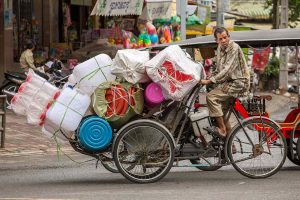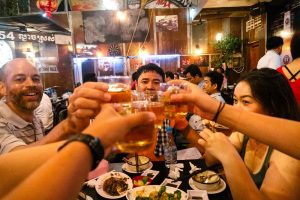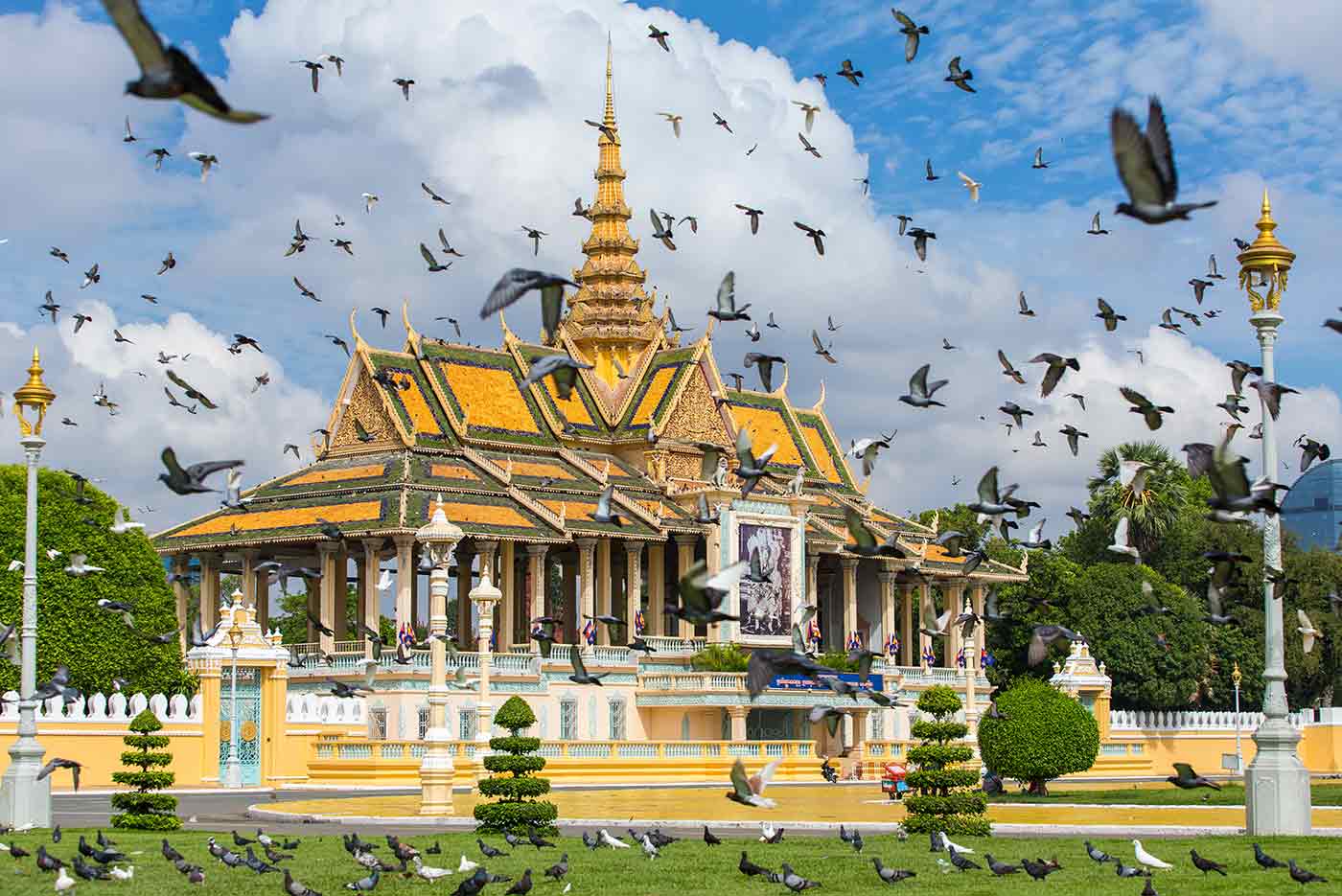You’ve just arrived in the bustling capital of the Kingdom of Cambodia. You don’t have a lot of time to learn what makes the city unique. You certainly don’t have time to read several blogs or research the reliability of information sources. So let’s get you up to speed ASAP with a Phnom Penh city guide that will arm you with the facts all tourists should know before enjoying a few days in Phnom Penh.
Phnom Penh city guide – people, transport, security and health
This guide is intended to be brief, so make sure you consult more detailed sources if required. The following information is intended to save you from falling prey to the most common issues tourists face. Phnom Penh is our home and we love it. Our intention is to make sure you leave the city feeling the same way.
The People
Firstly, forget about any negative feelings you’re harbouring due to situations in other countries. Cambodians are different: polite, proud, and quite relaxed. Assertiveness is not their forte. In fact, any form of aggression tends to create awkward situations. You will rarely get a positive result by raising your voice and wildly gesticulating. Keep your cool and always put things into perspective. If you realise you’re red-faced and yelling about the price of a $5 wood carving, it’s probably time to chill out.
You’ll be frustrated at times. Cambodians rarely admit they don’t understand what’s going on. Aside from the obvious language barriers, a lot of people would rather just nod and vaguely suggest they understand where you’re going and what you want rather than lose your business. It’s not uncommon to take an unplanned scenic trip (AKA wild goose chase). You can lessen the instances of these potentially frustrating situations by doing your own research, consulting your hotel’s staff, and finding an excellent Tuk Tuk driver.
 Transport
Transport
The first thing you’ll need to do is get from A to B, so a Tuk Tuk driver is often the first Cambodian person you’ll spend significant time with. Don’t bother with anyone who has poor English skills, or someone who constantly refers to a laminated map to work out where you’re heading (the brown, faded laminated card is also used for peddling trips to places you don’t want to go to, like gun ranges).
Our advice is to find a driver you like and get their phone number. You can usually negotiate a deal (an hourly or day rate) to save money and have the convenience of someone you trust to be on standby. A standard fee is $2 for an average trip. It’s also the minimum fee, so you can see how it can add up when you’re scooting around town, shopping and eating. The other option is the smaller Auto-Rickshaws, which have meters and therefore offer better value for short trips.
Security
Even as you negotiate your first Tuk Tuk ride, you should already be exercising some due diligence. Cambodians are very ethical, and they particularly hate theft. They will chase down a ‘Jau’ (thief) and dish out street justice. But every city has crime, so you still need to use some common sense.
Leave credit cards and passports in the hotel safe and only take enough US Dollars to get you through each day. Cambodia runs on cash anyway. Credit cards are seldom accepted. There’s no point carrying anything that is useless and will be difficult to replace.
Now that you’ve minimise the damage, minimise the risk. Firstly, we don’t hold anything valuable close to the road. The main source of theft is kids on motos who race by and snatch handbags. That’s why you see curtains and bars on the side of Tuk Tuks. You don’t need to be paranoid, you just need to be smart. Don’t offer phones, wallets and purses as targets and it’s likely you simply won’t appear on any thief’s radar.
 Health
Health
We all love street food. Well, let’s be clear: we love the taste, not the subsequent sickness. Locals and expats have been through the obligatory illnesses and emerged with superhuman guts. We can afford to take a few hits, but it’s impractical for holidaymakers to do the same.
Cambodia is so affordable that you don’t need to eat street food to eat cheap. There are plenty of great restaurants serving local cuisine. It may seem like a weird way to start a dining experience but some of the more savvy and adventurous expats assess danger levels according to condition of the restaurant’s bathroom. In a country where regulation is light (if it exists at all) it makes common sense to eat at a place that sets its own high standards. Soap is a very good sign.
As for the seductive lure of all that street food, our advice is to take your Tuk Tuk driver to lunch and let him choose. You get to learn what to order, get acquainted with your guide, and become familiar enough to receive decent service if you choose to return.
As for treatment, you should have a cache of every common cure including pills for diarrhoea, constipation and worms. Most glossy western-style pharmacies usually have a knowledgeable chemist at the counter who speaks English. Many of the drugs you require a prescription for in your home country are available here, over the counter. They are also very cheap.
As for more serious issues, the Royal Phnom Penh Hospital is the best equipped, but expertise varies. That’s why the most serious conditions require evacuation to a higher quality hospital, firstly in Bangkok, then in your home country. Last but definitely not least, you need to be A/ vaccinated; and B/insured. Don’t run the gauntlet. It could be one of the most expensive mistakes of your life.
Tourist-friendly zones
During the day, most of Phnom Penh is safe and friendly, including the central business district which is home to The Pacific Hotel and the famous shopping hub: Central Market. At night, you’re advised to stick to the Riverside, Russian Markets and Boeung Keng Kang 1 (BKK1). These are the areas that are well equipped to cater for tourists. There’s a vast choice of eateries and bars, and most of the locals who work in these areas speak English.
The Riverside is the most picturesque but attracts the beggars and hawkers. BKK1 is probably the best choice for food and drink, especially if you want variety. The Russian Market region offers the best taste of local culture.
At night, the northern end of the Riverside transforms into an infamous red light district. While it may not be the seediest red light district on the planet, it doesn’t bring out the best in people, and tends to attract the criminal element. The no-go zone begins at Street 136 and extends several blocks north.
 Attractions and tours
Attractions and tours
If you’re looking for an adventure, there are plenty of ways to satisfy your curiosity and tantalise your tastebuds. Check out our popular blog on guided tours of Phnom Penh, read our article on Phnom Penh tourist attractions, and plan the perfect night out.
Have a great time while you’re in our Kingdom’s capital, and drop in to see us at The Pacific Hotel or our restaurant and bar, the Barb & Lotus.
Choum reap leah!
